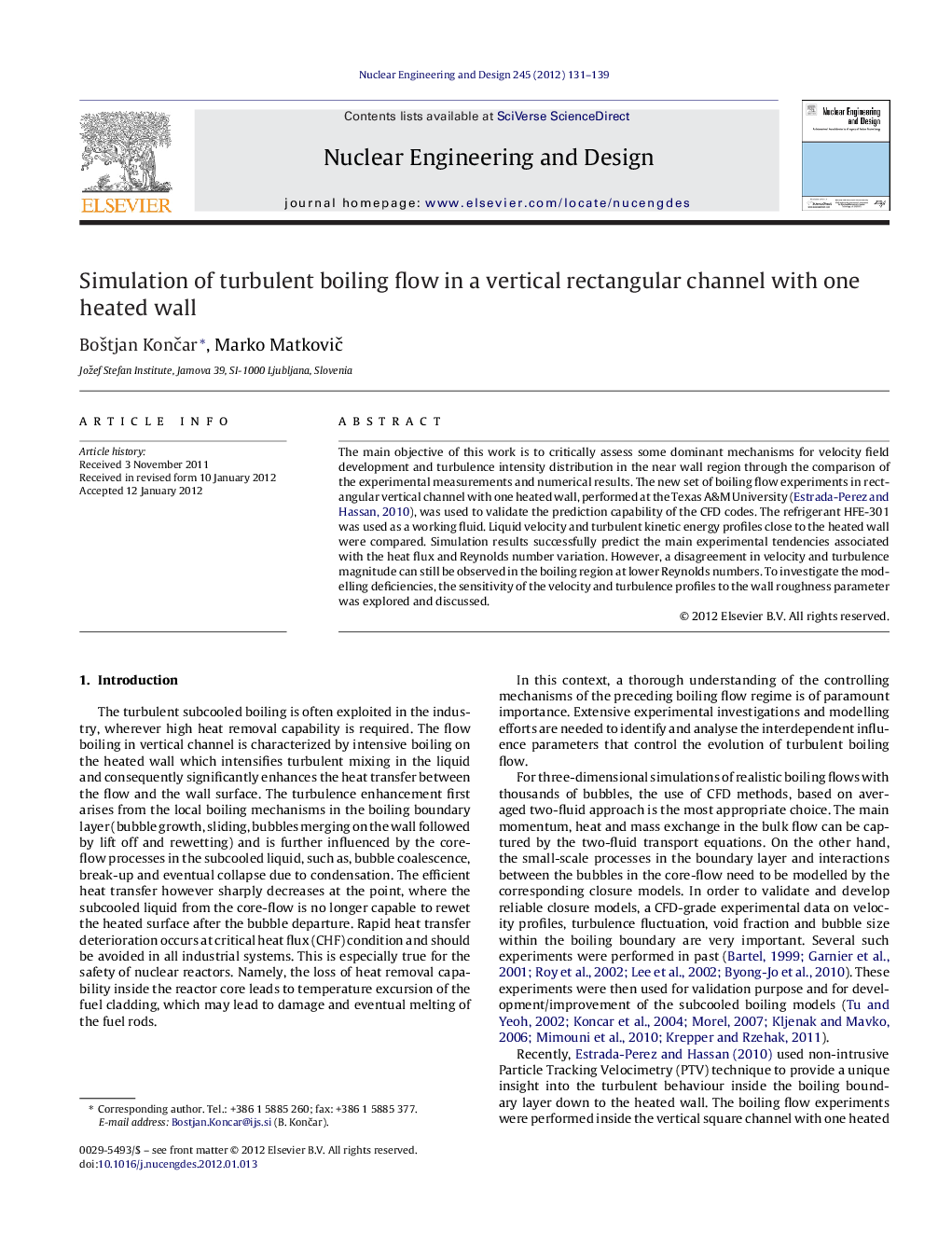| Article ID | Journal | Published Year | Pages | File Type |
|---|---|---|---|---|
| 297316 | Nuclear Engineering and Design | 2012 | 9 Pages |
The main objective of this work is to critically assess some dominant mechanisms for velocity field development and turbulence intensity distribution in the near wall region through the comparison of the experimental measurements and numerical results. The new set of boiling flow experiments in rectangular vertical channel with one heated wall, performed at the Texas A&M University (Estrada-Perez and Hassan, 2010), was used to validate the prediction capability of the CFD codes. The refrigerant HFE-301 was used as a working fluid. Liquid velocity and turbulent kinetic energy profiles close to the heated wall were compared. Simulation results successfully predict the main experimental tendencies associated with the heat flux and Reynolds number variation. However, a disagreement in velocity and turbulence magnitude can still be observed in the boiling region at lower Reynolds numbers. To investigate the modelling deficiencies, the sensitivity of the velocity and turbulence profiles to the wall roughness parameter was explored and discussed.
► CFD simulation of boiling flow experiment in vertical rectangular channel. ► Comparison of velocity and turbulence profiles close to the heated wall. ► Effect of bubble induced turbulence was modelled and studied. ► Main experimental trends of the heat flux and Re variation successfully predicted. ► Disagreement with experiment the highest at low Re in the near-wall region.
